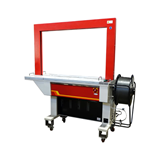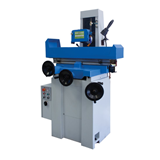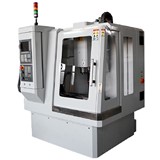Green manufacturing in Australia combines compliance with competitive advantage, highlighting practical strategies for sustainability, regulations, and industry-specific solutions.
Key takeaways
-
Green manufacturing in Australia is no longer just a compliance requirement but a powerful competitive advantage, driving cost savings, brand reputation, and market access.
-
Practical challenges include meeting evolving environmental regulations, managing energy costs, and integrating sustainable materials without sacrificing efficiency.
-
Emerging trends such as circular economy principles, renewable energy integration, and digital compliance monitoring are reshaping manufacturing.
-
Government incentives like the Modern Manufacturing Strategy and Clean Energy Finance Corporation support make green investments financially viable.
-
Industry variation means green manufacturing varies by sector in Australia, with tailored approaches unlocking practical benefits and competitive advantages specific to each industry’s challenges and opportunities.
-
Supply chain sustainability and risk management involve managing Scope 3 emissions through sustainable suppliers to strengthen supply chain resilience, reduce risk, and enhance brand trust in Australia’s transparency-driven market.
-
Environmental reporting requires accurate measurement and transparent reporting of your environmental footprint, which is essential for compliance, continuous improvement, and accessing green financing in Australia.
-
Customer benefits arise as green manufacturing credentials attract Australian consumers and corporate buyers, driving sales growth, premium pricing, and stronger market positioning.
-
Real-world examples, such as Bluescope Steel’s sustainability initiatives and Orica’s decarbonisation projects, illustrate how compliance and competitiveness align in practice.
Introduction
If you’re a manufacturing decision-maker in Australia, “green manufacturing” has likely moved from a buzzword to a business imperative. Increasingly stringent environmental regulations, combined with growing consumer demand for sustainable products, mean your compliance efforts can directly impact your bottom line and market positioning. Navigating this evolving landscape is challenging but offers significant opportunities: reduced energy costs, new market access, improved stakeholder trust, and enhanced resilience.
Why green manufacturing matters now in Australia
Australia’s manufacturing sector faces rising pressure from multiple fronts:
- Energy costs have surged, with industrial electricity prices up nearly 20% in the past two years.
- The federal government has committed to net zero emissions by 2050, imposing tighter environmental standards on industrial operations.
- Consumers and supply chain partners increasingly demand transparency and sustainability credentials.
- The Modern Manufacturing Strategy includes targeted funding and incentives to support sustainable manufacturing transitions.
These forces create a landscape where green compliance can no longer be an afterthought, it’s central to long-term competitiveness.
Key themes and considerations for your green manufacturing journey
Understanding and managing compliance
Australian manufacturers must navigate a complex framework of environmental regulations:
- Federal laws such as the National Greenhouse and Energy Reporting Act (NGER Act) require accurate emissions reporting.
- State-level regulations impose limits on water use, waste disposal, and local air quality.
- Product stewardship laws require manufacturers to consider end-of-life product management.
Practical advice: invest in digital compliance monitoring tools that provide real-time tracking of energy use and emissions, reducing the risk of non-compliance fines and enabling proactive management.
Integrating sustainability into operations
Going green means rethinking your inputs, processes, and outputs:
- Shift to renewable energy sources, such as solar or wind, either on-site or via green power purchase agreements.
- Optimize energy efficiency through process upgrades and automation.
- Adopt circular economy principles by incorporating recycled or bio-based materials.
- Reduce water consumption and waste through lean manufacturing techniques.
For example, Bluescope Steel in Australia uses electric arc furnaces powered increasingly by renewables, achieving significant carbon reductions while maintaining production efficiency.
Capitalising on government incentives and funding
Transitioning to green manufacturing can require significant upfront investment but is often supported by government grants and low-interest financing. Relevant programs include:
- The Modern Manufacturing Initiative (MMI), offering grants for projects that improve sustainability and competitiveness.
- The Clean Energy Finance Corporation (CEFC), which provides finance solutions for renewable energy integration.
- State-based energy efficiency rebates and innovation grants.
Understanding these options is crucial to reducing financial risk and improving your ROI on green investments.
Overcoming practical challenges
Implementing green manufacturing isn’t without hurdles:
- Skills shortages in sustainability expertise and emerging technologies can slow progress.
- Upfront costs can strain cash flow, especially for SMEs.
- Supply chain complexities arise when sourcing certified sustainable materials.
To overcome these, partner with local TAFEs and universities for workforce development, engage with trusted suppliers who provide certification, and consider phased investment strategies aligned to financial and operational milestones.
Green manufacturing across Australian industries
Green manufacturing isn’t a one-size-fits-all solution, it plays out differently across Australia’s diverse industrial landscape. Understanding how your sector is adapting can help you identify practical steps and competitive opportunities.
Manufacturing and heavy industry
Steel, aluminium, and mining equipment manufacturers are investing in energy-efficient processes and low-carbon materials. For example, Bluescope Steel is pioneering electric arc furnaces powered by renewables, significantly cutting emissions while maintaining productivity.
Food and beverage processing
This sector focuses heavily on reducing water usage, minimising waste, and adopting circular packaging solutions. Mars Petcare Australia’s zero-waste factories showcase how integrating renewable energy and recycling streams can improve sustainability and cut costs.
Chemicals and pharmaceuticals
Strict environmental regulations push companies to innovate in emissions control and waste treatment. Orica’s decarbonisation projects highlight how green manufacturing can align with compliance and enhance operational efficiency.
Construction materials and modular building
Suppliers are shifting towards sustainable raw materials and off-site modular manufacturing, which reduces onsite waste and energy consumption. Companies like PT Blink lead the way in using sustainable practices to accelerate project delivery.
Electronics and advanced manufacturing
With growing demand for green tech components, manufacturers are adopting clean energy and lifecycle management to meet strict environmental standards while driving innovation.
Supply chain sustainability and risk management
Green manufacturing extends beyond your own factory walls, your suppliers and logistics partners play a vital role. In Australia, managing Scope 3 emissions (those indirect emissions from your supply chain) is becoming essential for compliance and reporting. By working with suppliers who prioritise sustainability, you reduce environmental risk and improve supply chain resilience against disruptions like resource shortages or regulatory changes. This not only strengthens your operational continuity but also enhances your brand’s reputation with customers and investors demanding transparency.
Measuring and reporting environmental impact
Tracking your environmental footprint is no longer optional, it’s a critical business function. Australian manufacturers must comply with frameworks like the National Greenhouse and Energy Reporting (NGER) scheme and increasingly seek certifications such as ISO 14001 or Carbon Neutral accreditation. Robust data collection on emissions, energy use, waste, and water consumption helps you identify improvement opportunities and demonstrates your commitment to regulators, investors, and customers. Transparent reporting builds trust and can unlock access to green financing and government incentives.
Customer and market benefits
Embracing green manufacturing opens doors to new markets and strengthens customer loyalty. Australian consumers and business buyers alike increasingly prefer suppliers with credible sustainability credentials. This trend translates into tangible benefits: higher sales, premium pricing, and longer-term contracts. Demonstrating your environmental commitment also differentiates your brand in competitive sectors and can accelerate growth by aligning with corporate buyers’ net zero supply chain targets. Ultimately, sustainability efforts drive both your revenue and your reputation, motivating internal buy-in and ongoing investment.
Real-world applications and success stories
- Orica has invested heavily in decarbonisation technologies and is targeting net zero emissions by 2050 through innovations in energy use and chemical processing. This commitment strengthens its reputation globally while aligning with compliance mandates.
- Mars Petcare Australia runs zero-waste manufacturing facilities, dramatically reducing landfill contribution and cutting operational costs. They’ve achieved this by integrating renewable energy and circular waste streams into their production lines.
These examples demonstrate how compliance and competitive advantage can coexist and reinforce each other.
Looking ahead: Emerging trends shaping green manufacturing
- Digital twins and IoT-enabled monitoring allow manufacturers to optimise energy use and emissions in real time.
- Advanced materials such as bio-plastics and recycled composites are becoming mainstream.
- Circular manufacturing strategies focus on designing out waste and keeping materials in use.
- Collaborative industry initiatives in Australia are building shared infrastructure for sustainable manufacturing hubs.
Staying ahead of these trends will be key to maintaining your competitive edge.
Conclusion
Green manufacturing is no longer just about ticking regulatory boxes, it’s a pathway to a stronger, more resilient business. By embracing compliance not as a cost but as an investment in innovation and sustainability, you position your company to win in Australia’s evolving manufacturing landscape. Leveraging government support, adopting new technologies, and learning from industry leaders can turn challenges into opportunities, delivering both environmental and commercial benefits.




-160x160-state_article-rel-cat.png)








